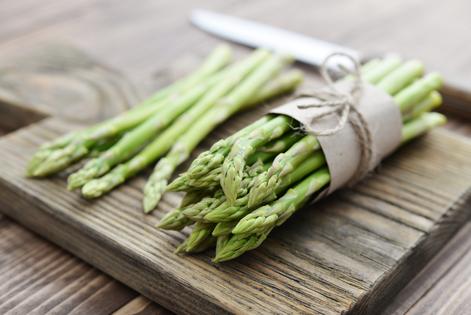Environmental Nutrition: Spring into asparagus
Published in Health & Fitness
Asparagus is a seasonal favorite.
The folklore
Asparagus, whose name means stalk or shoot in Greek, was first cultivated about 2,500 years ago in Greece, where it was used medicinally to treat toothaches and help prevent bee stings. Considered a delicacy since ancient times, this dainty and nutritious spear continues to be a delicious adornment to every plate.
The facts
There are more than 300 varieties of asparagus, though many are only ornamental. The most common (Asparagus officinalis) is green, but there are also purple and white varieties. One half-cup serving of cooked asparagus contains more than half the recommended dietary intake of vitamin K, necessary for blood clotting and wound healing, 34% DV (DV=Daily Value, based on 2,000 calories/day) of folate which supports healthy cell growth and function, and a host of anti-inflammatory plant compounds.
The findings
According to a recent review of studies on Asparagus officinalis, it is shown to have a diuretic effect and support digestion, as well as being high in fiber and having high levels of nutrients (Foods, 2024). Asparagus has been studied for its potential role in gut health. It contains high levels of inulin and several phytochemicals, including xylose, flavonoids, and saponins, which contribute to the growth of the beneficial gut bacteria lactobacilli and bifidobacteria (Food Research International, 2023). Emerging evidence suggests the potential anti-cancer role of asparagus and asparagus extracts due to their anti-inflammatory and antioxidant composition on changing the activity of cancer cells, notably in pancreatic cancer (Anticancer Research, 2023).
The finer points
When buying asparagus, look for smooth, round, and tender stalks, closed and compact tips, and a rich green color that extends almost to the ends. Fresh asparagus is best in season, from February to June, and reaches its peak in April and May. It’s also sold preserved in cans and jars and frozen. Asparagus is perishable, so use it within two days of purchase. Store spears upright with ends in a quarter-inch of water, or wrap stem ends with a damp paper towel to maintain freshness.
(Reprinted with permission from Environmental Nutrition, a monthly publication of Belvoir Media Group, LLC. 800-829-5384. www.EnvironmentalNutrition.com.)
©2024 Belvoir Media Group. Distributed by Tribune Content Agency, LLC.







Comments